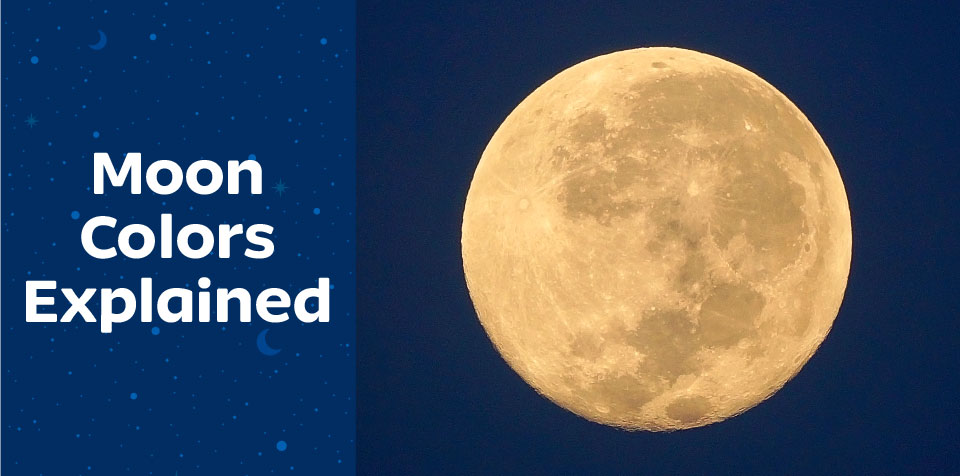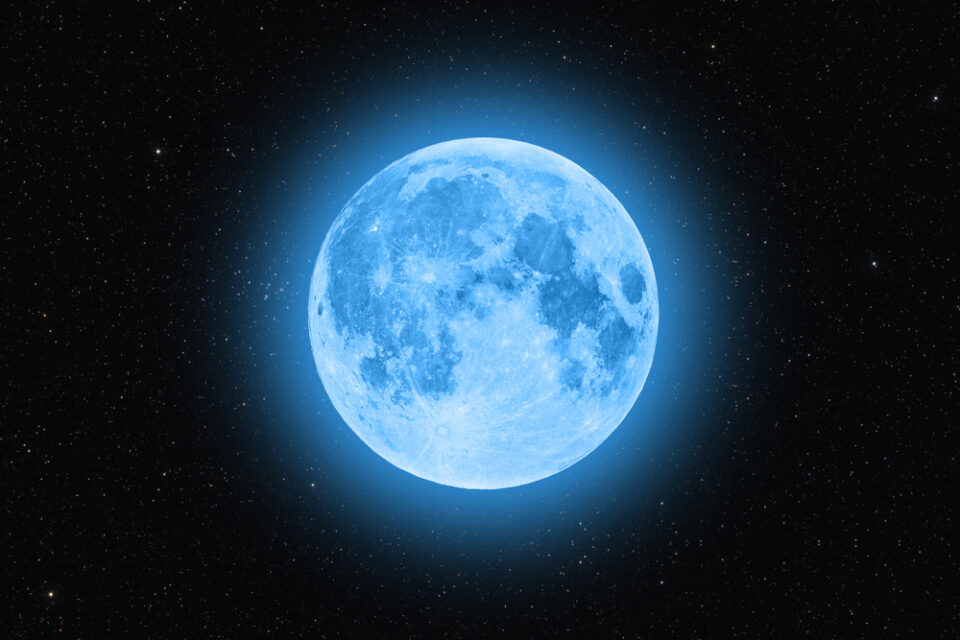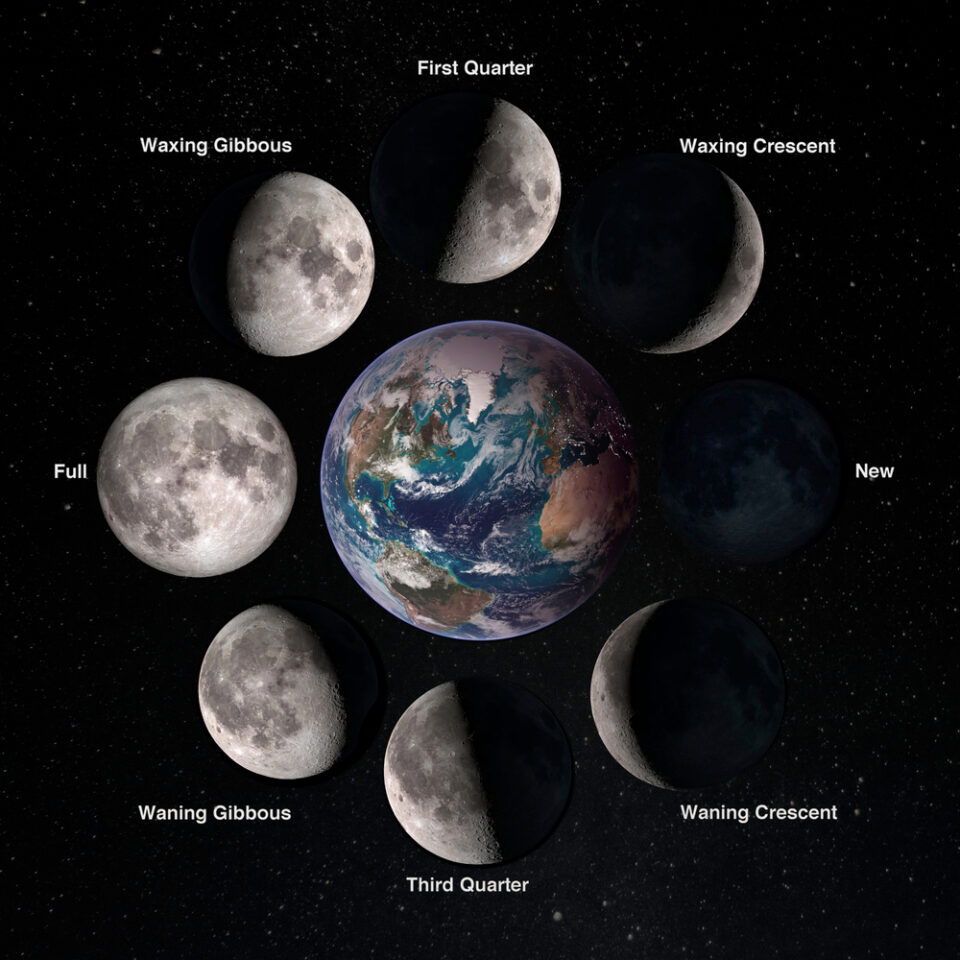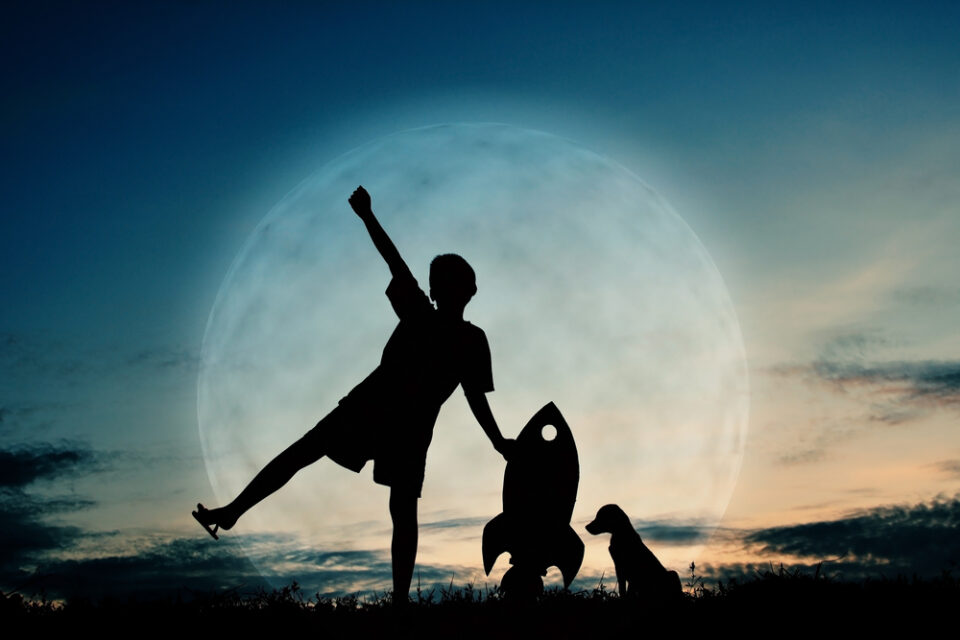
Is the Moon Really Blue? Explaining the Moon’s Colors
The Moon is our closest neighbor in the galaxy, orbiting Earth just 238,855 miles (384,400 kilometers) away. Earth has only this one natural satellite, unlike other planets in our solar system, most of which have several moons. Most of us have gazed up at the night sky and admired the Moon—and if you’ve spent enough time looking, you’ve probably noticed that it sometimes appears to change colors.
Are your children curious why this floating rock looks white, yellow, blue, or orange at different times of the year? We have the answers. Here’s everything your young space enthusiasts need to know about the Moon’s colors.
Does the Moon Actually Change Colors?
If you were to fly to the Moon, you’d land on a rock made up of shades of gray. This is because the lunar surface consists mostly of magnesium, iron, feldspar, and other minerals, which create a fine gray dust. This is the Moon’s true color, and it keeps this appearance all year long.
Why Does the Moon Change Colors?
Although the Moon’s surface is always the same color (and has been for billions of years), there are nights when it appears to be a different hue. This occurs for many reasons, and they all have to do with the atmospheric conditions above you as you gaze up at the sky.
First, it’s important to understand that the Moon doesn’t shine on its own. Instead, it reflects light from the Sun, which bounces back to Earth and makes the Moon visible. Those light waves have to travel a long way to reach stargazers down on Earth, and the many particles in our atmosphere can make the waves scatter. The color a person sees when they look at the Moon depends on the light waves that reach their eyes, and that light can vary due to pollution in the air or the Moon’s position on the horizon. If those things change, sometimes the color of the Moon appears to change too.

The Different Colors of the Moon
Why does the Moon look blue one night and red another? Let’s examine the most common Moon colors and the things that cause them to appear.
Blue
Blue moons are very rare—that’s where the saying “once in a blue moon” gets its meaning. They can occur when moonlight travels through an atmosphere full of dust and smoke. People are most likely to see a blue moon after a volcanic eruption. When the Indonesian volcano Krakatoa erupted in 1883, the Moon appeared green-blue in that region for almost two years.
Pink or Red
Sometimes, the Moon appears pink or red—a phenomenon known as a “blood moon.” This change in color is the result of a total lunar eclipse, when Earth sits between the Moon and the Sun, blocking most of the light traveling toward the Moon. The light that does reach the Moon passes through Earth’s atmosphere first, and light with shorter wavelengths, like blue and violet, scatters before reaching the Moon. This leaves only longer-wavelength colors, like red, to reflect back at us.
Yellow or Orange
“Harvest moon” is the name for a yellow or orange moon, which usually occurs in late summer or early fall. A harvest moon usually occurs when our dusty neighbor is sitting close to the horizon, meaning that the light reflecting off the Moon has to travel through more of the atmosphere to reach our eyes. As with a total lunar eclipse, short-wavelength colors, like blue scatter, causing us to see longer-wavelength colors like orange and yellow.

The Phases of the Moon
Some nights, the Moon isn’t just a different color—it also appears to be a different shape. This is because the Sun only illuminates half the Moon: the side facing the Sun. As the Moon orbits our planet, the side facing the Sun isn’t always fully visible from Earth. Because little light reaches the side of the Moon facing away from the Sun, the shape we see in the sky changes, showing us different “types” of moons.
It takes about one month for the Moon to orbit Earth. In that time, the Moon rotates through the same eight appearances, known as its “phases.” Here’s some interesting information you can share with your kids about the phases of the Moon.
New Moon
During this phase, the Moon sits between Earth and the Sun. The Moon’s illuminated half faces the Sun while its dark half faces Earth, causing the Moon to appear to be missing (even though it’s still orbiting around our planet). The new moon signals the beginning of a new lunar cycle and occurs approximately every 29.5 days.
Waxing Crescent
As the Moon orbits around Earth, more of its illuminated side becomes visible to stargazers on the ground. For the subsequent phases (until a full moon), astronomers say the Moon is “waxing,” which means it looks like it’s growing. The first waxing phase is called a waxing crescent, which appears as a tiny sliver of the right side of the Moon.
First Quarter
When the Moon reaches its first quarter phase, it sits at a right angle to the Sun, respective to Earth. This means viewers on Earth can see about half of its illuminated side (on the right). Many call this a “half moon” because it looks like a semicircle in the sky. However, this term isn’t exactly correct, as they only see half of the Moon’s illuminated side (or a quarter of the Moon).
Waxing Gibbous
At this point in the lunar month, more than half of the Moon’s illuminated side is visible. This phase is called the waxing gibbous, which comes from the Latin word for “hump.” A waxing gibbous moon isn’t quite a circle yet, but its right side is larger (and brighter) than the first quarter moon.
Full Moon
A full moon is a point in the lunar month when all of the Moon is illuminated. During this phase, the Moon is directly opposite the Sun, allowing reflecting sunlight to give us a complete look at the side of the Moon facing us. This lunar cycle phase typically lasts just three days before the Moon’s orbit changes our view.
Waning Gibbous
The full moon is the halfway point in the lunar month, which means the Moon appears smaller in every phase after. This process is called “waning.” After a full moon, the next phase is called waning gibbous. It looks similar to the waxing gibbous, except that the bright side of the Moon is on the left instead of the right.
Last Quarter
The last quarter moon, sometimes also called the third quarter moon, occurs when the Moon reaches a second right angle with the Sun (similar to the first quarter). However, in this phase, the Moon’s illuminated side is on the left, showing the side that appeared invisible during the first quarter phase just a few weeks earlier.
Waning Crescent
The last phase in the lunar cycle is the waning crescent. It occurs when the Moon looks like a thin sliver illuminated from the left side. By the time the Moon reaches this point, it’s nearly completed its orbit—which means it’s almost time to start over with another new moon.

Explore the Moon and Stars with Little Passports
No matter what shape or color the Moon is tonight, many kids are sure to be staring up at it in wonder. If your children constantly have their eyes skyward, encourage their interest with fun space-themed activities! Try some sensory fun with DIY moon sand or make a rocket ship from an old water bottle and blast off into imaginative play.
